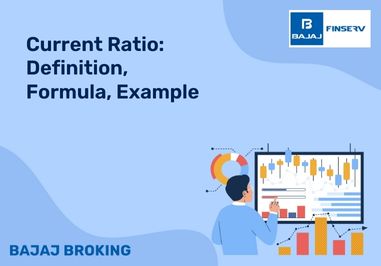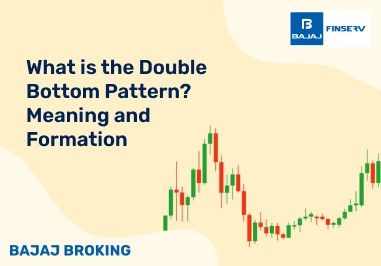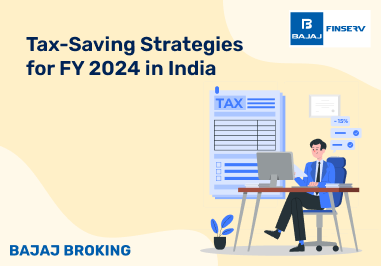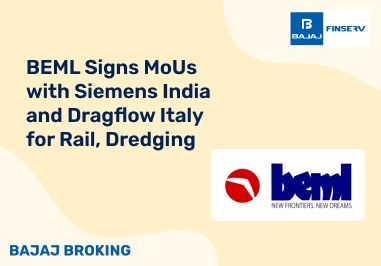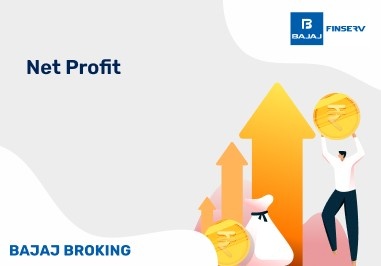BAJAJ BROKING
Divine Hira Jewellers IPO is Open!
Open a Free Demat Account
Trade Now, Pay Later with up to 4x
Track Market Movers Instantly
What is a Stop-Limit Order?
Risk management is one of the most important aspects of trading because the stock market is a risky environment that’s prone to volatility. With a proper risk management plan, you can protect your capital from eroding due to unfavourable market movements. One of the many risk management techniques that both traders and investors often use is the stop-limit order. The technique is simple and easy to set up and can prevent your position from going into deep losses if the market moves against you. Wondering about the meaning of a stop-limit order and how it can help you become a better trader? Read on to find out.
Also Read: Limit Order?
What is a Stop-Limit Order?
A stop-limit order is a combination of a stop-loss order and a limit order.
A stop-loss order is a type of order that is automatically executed when the price of an asset touches a pre-specified level. Stop-loss orders are kept pending and not executed until the price reaches the level specified by the trader. It is widely used by traders to limit the losses if the market ever moves against their position.
A limit order, meanwhile, is a type of order that’s executed at the price that the trader specifies. These orders remain pending and are not executed until the price of an asset touches the specified price.
Now, the stop-limit order is an order that’s instantly placed at the price specified by the trader when the asset reaches a predetermined price level. There are two components to such an order – the stop price and the limit price. The stop price determines when the order is sent to the exchange, whereas the limit price determines the price at which the order should be executed.
Stop-Limit Order: An Example
Although traders usually use stop-limit orders as part of their risk management plan to protect themselves from adverse market movements, they can also be used to lock in profits. Here’s a hypothetical example of a conventional stop-limit order strategy.
Assume you’re interested in investing in a company named HYG Limited. The stock is currently trading at ₹480 per share. You execute a buy order for 100 shares at ₹480 per share. Now since the stock market can be unpredictable and volatile, you wish to protect yourself from losses.
To do that, you decide to place a stop-limit order by setting the stop price at ₹470 per share and the limit price at ₹465 per share. Now, as you expected, the stock moved against your expectations and dropped to ₹470.
Since the stock price reached your stop price threshold, the stop-limit order is sent to the exchange, where it is listed with a limit price of ₹465 per share. The order is now active and will be executed once the stock price touches ₹465 per share.
As you can see, the stop-limit order limited your loss to just ₹1,500 (₹15 x 100 shares). If you hadn’t placed the order, your losses could have been more.
Now, a key point to note here is the placement of the stop-limit order. When placing such an order, it is important to set the stop and limit prices slightly further away from the current trading price. This will ensure that the order doesn’t get triggered prematurely due to the normal price movements in the stock.
Additional Read: Stock Symbol
Advantages of a Stop-Limit Order
Stop-limit orders offer a host of advantages to traders. Here’s a quick overview of some of the key benefits of this type of trading order.
- Mitigates Risk
Risk management is the biggest advantage of a stop-limit order. By limiting potential losses, the order can effectively mitigate volatility and the various market risks.
- Control Over the Price
The stop-limit order is only executed at the price that you specify at the time of placing the order. This gives you greater control and avoids situations where the trade is executed at a price that’s less than ideal.
- Versatility
A stop-limit order gives you the flexibility to set your desired stop and limit prices. Furthermore, in addition to loss prevention, you can also use the order to book profits.
- Automatic Trade
Another major advantage of a stop-limit order is that it is completely automated. Once you set up the order, you don’t have to keep monitoring it. Instead, you can simply carry on with your regular work. Once the stock price touches the stop price, the order is automatically sent to the exchange and is executed once the stock reaches the limit price.
Disadvantages of a Stop-Limit Order
Just like advantages, stop-limit orders have their own set of drawbacks as well. As an investor, you need to know what they are to be able to make well-informed trading decisions. Let’s look at some of the key disadvantages of this trading order.
- No Guarantee
With stop-limit orders, there’s no certainty of your order getting executed. For instance, if the stock price doesn’t reach the set limit price, your order may never get executed. This can be detrimental in fast markets where the prices move rapidly.
- Little Protection from Price Gaps
A price gap occurs when the price of a stock moves non-sequentially, i.e., it jumps from one level to another. A stop-limit order doesn’t provide any protection from such price gaps. For instance, if the limit price is set at ₹150 and the stock price jumps from ₹155 to ₹145 directly, your order would be executed at ₹145, earning you an additional loss of ₹5 per share.
- Slightly More Complex
Setting up a stop-limit order is not as easy as it may seem. It requires you to consider a host of different factors such as volatility in the counter and demand and supply, among other things. You also need to determine the right stop price and limit price.
- May Lead to Emotional Decision Making
When a stop level is triggered, many traders become overprotective of their positions and may want to hold onto the stock in the hopes of making a dramatic reversal. This unnecessarily creates a lot of emotional and psychological pressure, leading to bad decision-making.
How Does a Stop-Limit Order Differ from a Stop-Market Order?
A stop-limit order and a stop-market order are two different types of stop-loss orders you can place. The primary difference between the two is the price at which the order is executed. Now, in the case of a stop-limit order, the stock is sold at the price you specify.
However, in the case of a stop-market order, the stock is sold at the prevailing market price once the stock price touches the set stop level. Another noteworthy difference is that the execution of an order is virtually guaranteed with stop-market orders, which is usually not the case with limit orders.
If, as a trader, you’re not very particular about the price and simply wish to protect your position at all costs, consider placing a stop-market order. On the other hand, if you’re very particular about the price at which the asset must be sold at a loss, you may use a stop-limit order instead.
Also Read: Backstop in Stock Market
Conclusion
As you can see, a stop-limit order is a great tool in the repertoire of a trader. It is designed to help you cut your losses and protect your capital in the case of adverse market movements. That said, it’s not enough to simply know the meaning of stop-limit orders.
As a trader, you also need to know when and how to set up one. For instance, when setting up a stop-loss order, you need to consider the current market volatility. Failing to account for volatility can lead to your stop-limit order getting triggered prematurely, which can lead you to a loss.
The best way to learn how to place stop-limit orders accurately is through constant practice. You can use a demo trading account or a virtual trading platform to try out various stop-limit order strategies without risking your hard-earned money. And once you’re confident enough of your skills, you can progress to real trading.
Share this article:
Read More Blogs
Our Secure Trading Platforms
Level up your stock market experience: Download the Bajaj Broking App for effortless investing and trading


